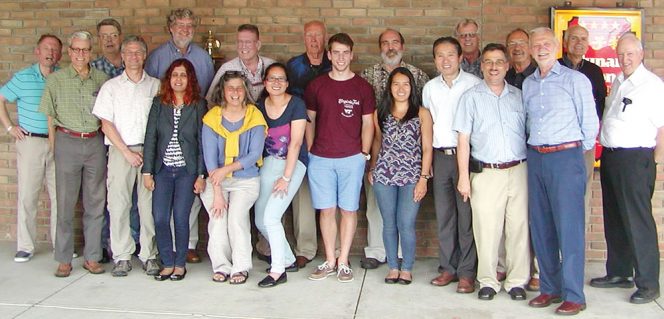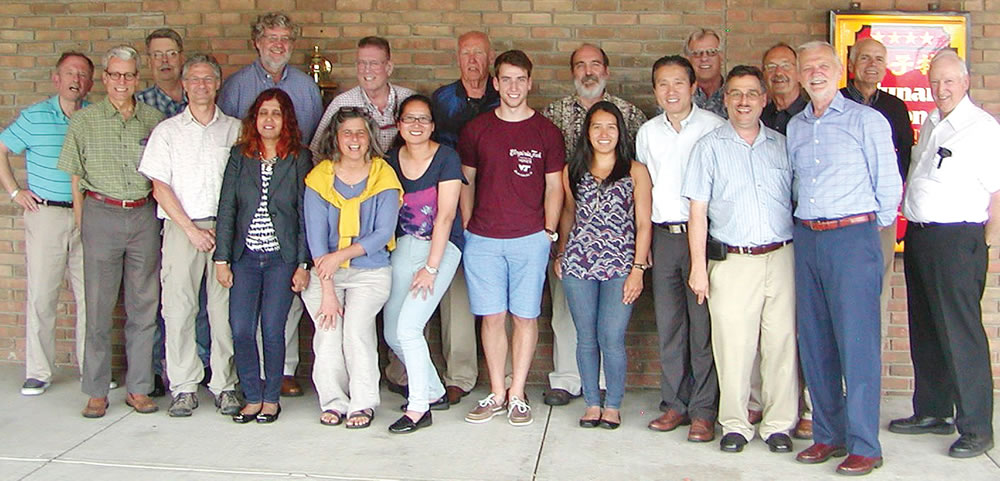These are the people who made the science that formed the basis for our regulations.
BioCycle July 2019

The standards that set the limits for metals in biosolids and composts are based on decades of scientific study. These studies, done by a group of scientists from universities, the USDA and U.S. Environmental Protection Agency (EPA), sought to understand the difference between total metals and the fraction of that total that could potentially cause harm as well as the pathways for that harm to occur. The group came together under the umbrella of the USDA CREES — Cooperative State Research, Education and Extension Service. The first sludge project started in the early 1970s as two groups: NC-118 and W-124. The groups started meeting in the 1970s with each meeting producing a book that reported the state of the science. With the 1985 meeting, the groups merged and became known as the W-170 “Chemistry and Bioavailability of Waste Constituents in Soils” group.
 Key members of that group were Al Page, Univ. of California; Jim Ryan, EPA; Terry Logan, Ohio State Univ.; Lee Sommers, Colorado State Univ.; Van Volk, Oregon State Univ.; Bill Sopper, Penn State Univ. (PSU); Bob Bastian, EPA; Dick Corey, Univ. of Wisconsin; Larry King, N. Carolina State Univ. (NC State); Cecil Lue-Hing, Chicago; Jimmy Street, Univ. of Florida (UFL); John Walker, EPA; Andrew Chang, Univ. of California; Tom Hinesly, Univ. of Illinois; Tom Bates, Univ. of Guelph; Bob Dowdy, USDA; Rufus Chaney, USDA; Randy Bruins, EPA; Dale Baker, PSU; Jim Smith, EPA; Dale Cole, Univ. of Washington; Lee Jacobs, Michigan State Univ.; George O’Connor, New Mexico State Univ.; Mike Overcash, NC State; and Pete Machno, Seattle.
Key members of that group were Al Page, Univ. of California; Jim Ryan, EPA; Terry Logan, Ohio State Univ.; Lee Sommers, Colorado State Univ.; Van Volk, Oregon State Univ.; Bill Sopper, Penn State Univ. (PSU); Bob Bastian, EPA; Dick Corey, Univ. of Wisconsin; Larry King, N. Carolina State Univ. (NC State); Cecil Lue-Hing, Chicago; Jimmy Street, Univ. of Florida (UFL); John Walker, EPA; Andrew Chang, Univ. of California; Tom Hinesly, Univ. of Illinois; Tom Bates, Univ. of Guelph; Bob Dowdy, USDA; Rufus Chaney, USDA; Randy Bruins, EPA; Dale Baker, PSU; Jim Smith, EPA; Dale Cole, Univ. of Washington; Lee Jacobs, Michigan State Univ.; George O’Connor, New Mexico State Univ.; Mike Overcash, NC State; and Pete Machno, Seattle.
These are the people who made the science that formed the basis for our regulations. This science has held up through two National Academy reviews. It is one of the few environmental regulations to embrace both scientific data and the concept of bioavailability. It has formed the basis for how we understand the behavior of metals and other contaminants in soils today. The graduate students who worked on these projects are now seniors in their fields. I got my MS and PhD with Rufus Chaney looking at cadmium availability in biosolids amended soils. Besides Rufus, I am very fortunate to have met and worked with many of these people. They were/are my mentors. The group continues to this day — now as W-3170.
Sally Brown, University of Washington
Continue reading













